Recycled bottle strawberry tower – sounds intriguing, right? Imagine plucking juicy, sun-ripened strawberries from your own vertical garden, all thanks to a clever DIY project using something you’d normally toss in the recycling bin! For centuries, humans have cultivated strawberries, from their humble beginnings as wild berries to the plump, sweet varieties we enjoy today. But what if you could grow them in a space-saving, eco-friendly way?
That’s where this amazing DIY trick comes in. In today’s world, where space is often limited and sustainability is key, creating a recycled bottle strawberry tower is the perfect solution. Whether you have a sprawling backyard or just a tiny balcony, this project allows you to enjoy fresh, homegrown strawberries without sacrificing valuable space. Plus, it’s a fantastic way to reduce waste and teach kids about the importance of recycling. I’m excited to show you how to build your own vertical strawberry paradise, step-by-step, and unlock a bountiful harvest right at your fingertips!
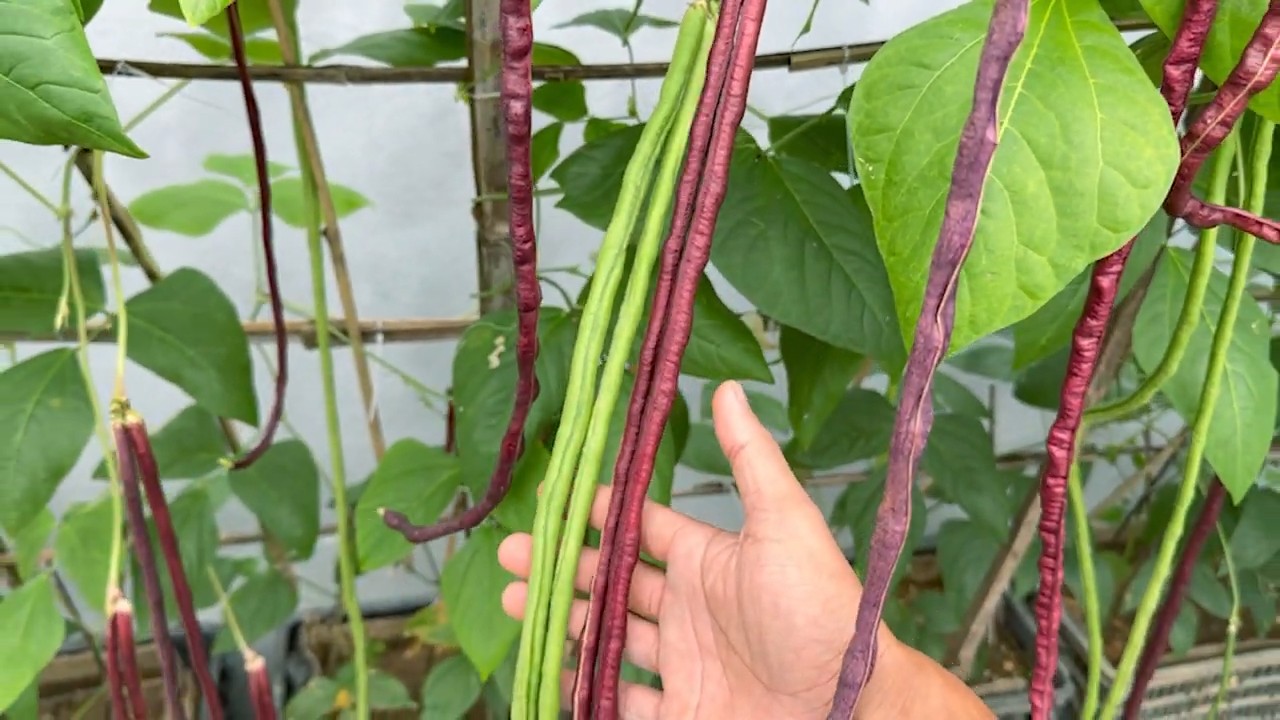
DIY Recycled Bottle Strawberry Tower: Grow Your Own Berries Vertically!
Hey there, fellow gardening enthusiasts! I’m super excited to share this awesome DIY project with you: a recycled bottle strawberry tower! It’s a fantastic way to grow a ton of strawberries in a small space, plus it’s a great way to reuse those plastic bottles that might otherwise end up in the landfill. Get ready to enjoy fresh, homegrown strawberries all season long!
What You’ll Need:
Before we dive in, let’s gather all the necessary materials. This will make the whole process smoother and more enjoyable.
* A bunch of plastic bottles (the more, the merrier! Aim for at least 10-15, depending on how tall you want your tower to be). 2-liter bottles work great, but you can use smaller ones too. Just make sure they’re all roughly the same size.
* A sharp utility knife or box cutter. Be careful!
* A drill with a large drill bit (around 1-inch diameter) and a smaller drill bit (around 1/4-inch diameter).
* Potting soil (specifically formulated for strawberries is ideal).
* Strawberry plants (duh!). Choose everbearing varieties for a continuous harvest.
* Gravel or small stones for drainage.
* Landscape fabric or burlap (optional, but recommended).
* Watering can or hose.
* Gloves (to protect your hands).
* Safety glasses (essential when using power tools).
* Measuring tape or ruler.
* Permanent marker.
* A sturdy pole or stake (optional, for extra support).
Preparing the Bottles: The Foundation of Your Tower
This is where the magic begins! We’re going to transform those plastic bottles into individual planting pockets.
1. Clean the Bottles: First things first, give all your bottles a good wash with soap and water. Remove any labels and residue. This will ensure proper drainage and prevent any unwanted chemicals from leaching into your soil.
2. Cut the Planting Holes: This is the trickiest part, so take your time and be careful! Using your utility knife or box cutter, carefully cut a rectangular hole in the side of each bottle. The hole should be large enough to accommodate a strawberry plant, about 3-4 inches wide and 2-3 inches tall. Position the hole towards the top of the bottle, leaving enough space below for soil. I like to make the holes slightly angled upwards to help the plants get more sunlight.
* Safety Tip: Always cut away from yourself and use a cutting board or stable surface.
3. Drill Drainage Holes: Now, grab your drill with the smaller drill bit (1/4-inch). Drill several drainage holes in the bottom of each bottle. This is crucial for preventing waterlogging and root rot. I usually drill about 5-6 holes per bottle.
4. Optional: Line with Landscape Fabric: This step is optional, but I highly recommend it. Cut pieces of landscape fabric or burlap to fit inside each bottle, covering the drainage holes. This will help prevent soil from washing out and keep the tower cleaner. Secure the fabric with a bit of glue or by simply tucking it in.
Assembling the Strawberry Tower: Building Upwards
Now for the fun part: putting it all together!
1. The Base Layer: Start with your first bottle. Add a layer of gravel or small stones to the bottom for drainage. This will prevent the roots from sitting in water.
2. Add Soil: Fill the bottle with potting soil, leaving a few inches of space at the top.
3. Plant Your First Strawberry Plant: Gently remove a strawberry plant from its container and loosen the roots. Place the plant in the hole you cut earlier, making sure the crown of the plant (where the stem meets the roots) is above the soil level. Add more soil around the plant to secure it in place.
4. Stack the Next Bottle: Now, take your second bottle and carefully place it on top of the first bottle. The bottom of the second bottle should rest securely on the soil in the first bottle. You might need to adjust the position slightly to ensure stability.
5. Repeat the Process: Continue adding layers, filling each bottle with gravel, soil, and a strawberry plant. Make sure to stagger the planting holes so that the plants get adequate sunlight and don’t block each other.
6. Secure the Tower (Optional): If you’re worried about your tower toppling over, you can insert a sturdy pole or stake through the center of the bottles. This will provide extra support and stability, especially in windy areas.
* How to do it: Before you start stacking, drill a hole in the center of the bottom of each bottle, large enough to accommodate your pole. As you stack the bottles, thread them onto the pole.
Watering and Maintenance: Keeping Your Strawberries Happy
Your strawberry tower is complete! Now, let’s talk about how to keep your plants healthy and productive.
1. Watering: Water your strawberry tower regularly, especially during hot and dry weather. The soil should be consistently moist, but not waterlogged. Water from the top, allowing the water to trickle down through the bottles.
2. Fertilizing: Feed your strawberry plants with a balanced fertilizer every few weeks. Follow the instructions on the fertilizer package. I like to use a liquid fertilizer diluted in water.
3. Sunlight: Place your strawberry tower in a location that receives at least 6-8 hours of sunlight per day. Strawberries need plenty of sun to produce sweet, juicy berries.
4. Pest Control: Keep an eye out for pests like aphids, slugs, and snails. You can use organic pest control methods, such as insecticidal soap or diatomaceous earth, to keep them at bay.
5. Pruning: Remove any dead or yellowing leaves to keep your plants healthy and prevent disease.
6. Harvesting: Harvest your strawberries when they are fully ripe and red. Gently pluck them from the plant, being careful not to damage the surrounding berries.
Troubleshooting Tips: Addressing Common Issues
Even with the best care, you might encounter some challenges along the way. Here are a few common issues and how to address them:
* Yellowing Leaves: This could be a sign of overwatering, underwatering, or nutrient deficiency. Check the soil moisture and adjust your watering schedule accordingly. Fertilize your plants with a balanced fertilizer.
* Lack of Fruit: This could be due to insufficient sunlight, poor pollination, or nutrient deficiency. Make sure your plants are getting enough sunlight and fertilize them regularly. You can also try hand-pollinating the flowers by gently brushing them with a small paintbrush.
* Pest Infestation: Identify the pest and use appropriate organic pest control methods.
* Root Rot: This is caused by overwatering and poor drainage. Make sure your bottles have adequate drainage holes and avoid overwatering.
Choosing the Right Strawberry Variety: Picking Your Berries
Selecting the right strawberry variety is crucial for a successful harvest. Here are a few popular everbearing varieties that are well-suited for container gardening:
* Albion: Known for its large, sweet berries and disease resistance.
* Seascape: Produces consistently high yields of flavorful berries.
* Tristan: A beautiful variety with pink flowers and delicious berries.
* Ozark Beauty: A classic everbearing variety with excellent flavor.
Alternative Bottle Options: Thinking Outside the Box
While 2-liter bottles are a great option, you can also experiment with other types of plastic containers. Here are a few ideas:
* Water Bottles: Smaller water bottles can be used to create a smaller, more compact tower.
* Soda Bottles: Similar to 2-liter bottles, soda bottles work well for this project.
* Laundry Detergent Bottles: These bottles are often larger and sturdier, making them a good option for a larger tower. Just make sure to rinse them thoroughly before using them.
Final Thoughts: Enjoy Your Homegrown Strawberries!
And there you have it! Your very own recycled bottle strawberry tower. I hope you have as much fun building and growing as I do. There’s nothing quite like the taste of fresh, homegrown strawberries. Happy gardening!
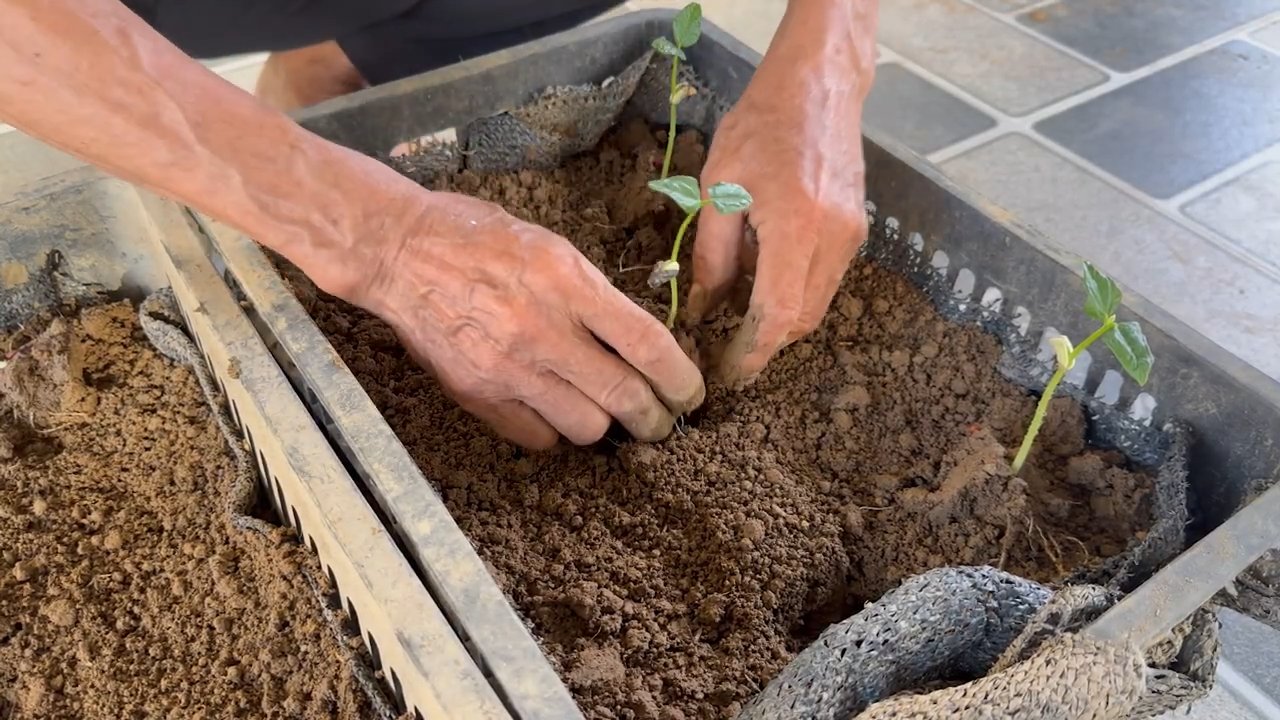
Conclusion
So, there you have it! Transforming discarded plastic bottles into a thriving vertical strawberry garden is not just a clever upcycling project; it’s a game-changer for anyone looking to maximize their gardening space, minimize waste, and enjoy a bountiful harvest of delicious, homegrown strawberries. This DIY recycled bottle strawberry tower is more than just a gardening project; it’s a statement about sustainability, creativity, and the joy of growing your own food.
Why is this a must-try? Because it addresses several key concerns for modern gardeners. Space is often a premium, especially for those living in apartments or urban environments. This vertical tower allows you to grow a significant number of strawberry plants in a fraction of the ground space required for traditional gardening. Furthermore, it’s an incredibly cost-effective solution. Instead of purchasing expensive planters, you’re repurposing materials that would otherwise end up in a landfill. And let’s not forget the satisfaction of creating something beautiful and productive with your own hands!
But the benefits extend beyond space and cost. The elevated design of the strawberry tower improves air circulation around the plants, reducing the risk of fungal diseases. It also makes harvesting easier and less back-breaking, as you don’t have to bend down as far. Plus, the visual appeal of a cascading tower of lush green foliage and vibrant red berries is undeniable. It’s a stunning addition to any balcony, patio, or garden.
Ready to take your strawberry growing to the next level? Here are a few suggestions and variations to consider:
* Experiment with different bottle sizes: Use a mix of smaller and larger bottles to create a more visually interesting tower. You can even use different colored bottles for a playful effect.
* Incorporate other herbs and vegetables: While this guide focuses on strawberries, you can easily adapt the tower to grow other small herbs and vegetables like lettuce, spinach, or even cherry tomatoes. Just be sure to choose plants with similar watering and sunlight requirements.
* Add a self-watering system: For even easier maintenance, consider adding a simple self-watering system. You can do this by inserting a wick made of cotton rope or felt into the bottom of each bottle, which will draw water up from a reservoir at the base of the tower.
* Consider the climate: If you live in a particularly hot climate, you may need to provide some shade for your strawberry tower during the hottest part of the day. Conversely, if you live in a cooler climate, you may need to bring the tower indoors during the winter months.
* Get creative with the stand: While the guide suggests using a wooden stake, feel free to experiment with other materials like metal pipes or even repurposed pallets. Just make sure the stand is sturdy enough to support the weight of the tower.
We are confident that you’ll find this DIY recycled bottle strawberry tower project to be both rewarding and enjoyable. It’s a fantastic way to connect with nature, reduce your environmental impact, and enjoy the taste of fresh, homegrown strawberries.
So, what are you waiting for? Gather your empty plastic bottles, grab your gardening tools, and get ready to create your own vertical strawberry paradise! We can’t wait to see your creations. Share your photos and experiences with us on social media using [Your Hashtag]! Let’s inspire others to embrace sustainable gardening and enjoy the sweet taste of success. Remember, every little bit helps in creating a greener and more sustainable future, and this DIY project is a delicious step in the right direction. Happy gardening!
Frequently Asked Questions (FAQ)
What type of plastic bottles are best for this project?
Ideally, you should use PET (polyethylene terephthalate) plastic bottles, which are commonly used for water and soda. These bottles are lightweight, durable, and readily available. Avoid using bottles made from PVC (polyvinyl chloride), as they can leach harmful chemicals into the soil. Make sure to thoroughly clean the bottles before using them to remove any residue. Clear or lightly colored bottles are preferable as they allow sunlight to reach the soil more evenly. Darker bottles can heat up excessively in direct sunlight, potentially harming the plant roots.
How often do I need to water the strawberry tower?
Watering frequency depends on several factors, including the climate, the type of soil you’re using, and the size of the bottles. In general, you’ll need to water more frequently during hot, dry weather. Check the soil moisture regularly by sticking your finger into the top inch of soil. If it feels dry, it’s time to water. When watering, make sure to saturate the soil in each bottle until water drains out of the bottom. Consider adding a layer of mulch to the top of the soil to help retain moisture. A self-watering system, as mentioned earlier, can significantly reduce the need for frequent watering.
What kind of soil should I use for my strawberry plants?
Strawberries thrive in well-draining, slightly acidic soil. A good potting mix specifically formulated for fruits and vegetables is ideal. You can also create your own mix by combining equal parts of compost, peat moss (or coconut coir), and perlite or vermiculite. Compost provides essential nutrients, peat moss (or coconut coir) helps retain moisture, and perlite or vermiculite improves drainage. Avoid using heavy clay soil, as it can become waterlogged and suffocate the roots.
How much sunlight do strawberry plants need?
Strawberry plants need at least 6-8 hours of direct sunlight per day to produce a good crop of berries. Choose a location for your strawberry tower that receives plenty of sunlight. If you live in a particularly hot climate, you may need to provide some afternoon shade to prevent the plants from overheating. If you don’t have access to enough natural sunlight, you can supplement with grow lights.
How do I fertilize my strawberry plants in the tower?
Strawberry plants are heavy feeders and benefit from regular fertilization. Use a balanced fertilizer specifically formulated for fruits and vegetables. Follow the instructions on the fertilizer package for application rates and frequency. You can also use organic fertilizers like compost tea or fish emulsion. Avoid over-fertilizing, as this can burn the roots and damage the plants. A slow-release fertilizer incorporated into the soil at planting time can provide a steady supply of nutrients throughout the growing season.
How do I protect my strawberry plants from pests and diseases?
Regularly inspect your strawberry plants for signs of pests and diseases. Common pests include aphids, spider mites, and slugs. You can control these pests with insecticidal soap, neem oil, or by hand-picking them off the plants. Common diseases include powdery mildew and gray mold. Prevent these diseases by providing good air circulation, avoiding overhead watering, and removing any infected leaves. Consider using organic fungicides if necessary. Companion planting with herbs like basil or marigolds can also help deter pests.
Can I grow strawberries in a recycled bottle tower year-round?
Whether you can grow strawberries year-round depends on your climate. In mild climates, you may be able to grow strawberries year-round with proper care. In colder climates, you’ll need to protect the plants from frost and freezing temperatures. You can do this by bringing the tower indoors or covering it with a frost blanket. Some strawberry varieties are more cold-hardy than others. Research which varieties are best suited for your climate.
How do I harvest strawberries from the tower?
Strawberries are ready to harvest when they are fully red and slightly soft to the touch. Gently twist or snip the berries off the plant, leaving a small piece of the stem attached. Harvest regularly to encourage the plants to produce more berries. Avoid bruising the berries during harvest. Store harvested strawberries in the refrigerator and consume them within a few days for the best flavor.
What do I do with the strawberry plants at the end of the growing season?
At the end of the growing season, you have a few options. You can either discard the plants and start fresh the following year, or you can overwinter them. To overwinter the plants, prune them back to about 4 inches tall and move the tower to a sheltered location. Water sparingly during the winter months. In the spring, transplant the plants into fresh soil and resume regular watering and fertilizing. Some strawberry varieties produce runners, which are small plantlets that grow off the main plant. You can propagate new plants by rooting these runners.


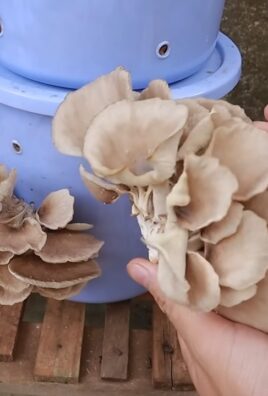
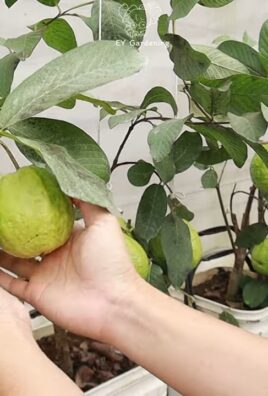
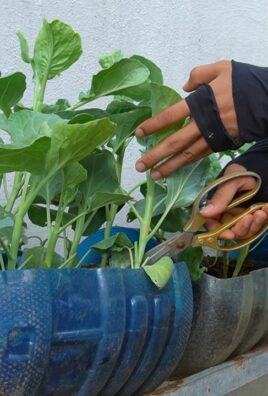
Leave a Comment